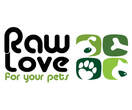
As the article says 'making dog food at home and meet's your dog's nutritional needs is not as simple as you may think, plus it is a lot of work. Do consider investigating the options we have at Raw Love Pet and ensure your dog gets all it needs. All free-range proteins, no grains, no preservatives. We get the veggies, fruit & supplements from the same shops & farms where we buy our own supplies, including health shops and organic outlets. There are so many benefits to feeding your pups & dogs a diet of fresh, raw food – most important being a healthy immune system. A raw diet also assists with multiple health challenges, including allergies, dry & itchy skin, digestive problems, obesity, constipation and many more – plus it is what dogs were designed to eat. Registered with Dept of Health. Available in Gauteng, Cape Town & Surrounds and KZN. Do have a look at our website at www.rawlovepets.co.za and contact us if you have any questions.
Homemade Dog Food - Making Your Own
https://pets.webmd.com/
(This is a great website with tons of interesting articles - do visit and enjoy!)
Your dog is part of your family, and you may be willing to do most anything for him. That could include making his meals from scratch. If so, get out the apron -- but get ready to teach yourself a few new tricks. There are things you need to know to keep your pet healthy and strong.
Making dog food that meets Fido’s nutrition needs isn't as simple as you might think, says pet nutritionist Cailin Heinze, VMD. “It can be done, it just takes a lot of dedication, a lot of work, and for some pets and some ingredients, quite a bit of expense,” Heinze says.
1. Start With a Good Recipe
Many dog food recipes fall short in certain nutrients, especially iron, copper, calcium, and zinc. Even some recipes created by veterinarians don't measure up. The University of California, Davis, School of Veterinary Medicine tested 200 recipes, many written by vets. The researchers found most of the recipes were short on some essential nutrients.
The best way to make sure a recipe has what it takes is to choose one created by an expert with training in dog nutrition, says Jennifer Larsen, DVM, PhD. That might be a certified pet nutritionist or a PhD-trained animal nutritionist with experience making pet food. Your vet should be able to point you in the right direction.
Your pet needs protein (animal meat, seafood, dairy, or eggs), fat (from meat or oil) and carbohydrates (grains or vegetables). He also needs calcium (from dairy or an ingredient such as egg shells), and essential fatty acids (from certain plant oils, egg yolks, oatmeal, and other foods).
And if that's not enough to consider, if your dog has a health problem, he may need a special diet. You may need a pet nutrition expert to create custom recipes.
2. Prepare the Recipe Right
Tempted to experiment in the kitchen? Save it for yourself. It’s best not to improvise when you cook for your pooch.
- Follow the recipe. Altering it can have unintended effects. For example, cooking chicken with or without skin and bone changes the recipe’s nutrient profile, Larsen says. You might also add or subtract calories without meaning to.
- Don’t swap ingredients. Some ingredients seem similar but don’t provide the same nutrition. For example, corn, canola, and walnut oil provide certain essential fatty acids that olive oil and coconut oil don’t. By making swaps, “you could very easily unbalance the diet,” Larsen says.
- Buy a food scale. They are much more accurate than measuring cups, especially for measuring meat.
Never add foods that are toxic to dogs. These include chocolate, grapes, raisins, onions, garlic, avocados, and Macadamia nuts.
If you want to mix things up, do it with the treats you feed. Offer dog-safe fresh fruits and vegetables as treats.
3. Add the Right Supplements
Even the best recipes often don’t provide enough of certain nutrients, such as calcium. Your pup needs supplements if you’re feeding him from scratch. Which ones depend on which nutrients are missing from his meals. A good recipe should include specific supplement instructions. If you're unsure, talk to a pet nutritionist.
4. Make Sure the Diet’s Working
After your dog’s been dining on your kitchen creations for 2 to 3 weeks, take him to the vet to make sure he’s not gaining or losing too much weight. If his weight is changing, check it again in a couple of weeks.
Take your pooch for a checkup twice a year. The vet can look at his skin, coat, body condition, and “any type of problems that might be happening as the result of the diet,” Larsen says.




